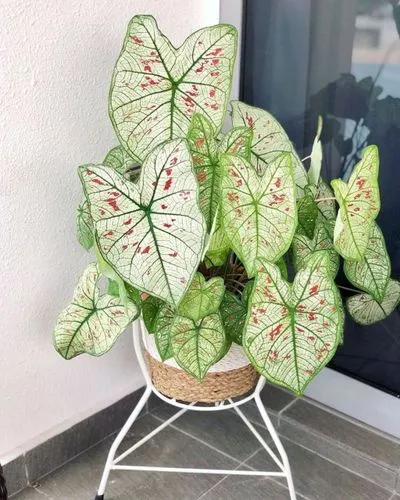Cryptanthus species grow as evergreen, perennial herbaceous plants . They mostly grow terrestrially. Most Cryptanthus species are relatively small (rosette diameter 15 to 30 centimeters, rarely more). The coarse, parallel- veined leaves sit on a compressed main axis in a basal rosette. The leaves are lightly reinforced by a serrated leaf margin. The most decorative thing about the Cryptanthus species are their sometimes wavy, often beautifully drawn (patterned) leaves. The leaves have suction scales at least on the underside of the leaf. The inflorescences have strongly compressed stem axes and so all the flowers sit in a "head" together in the middle of the leaf rosette (very inconspicuous, "hidden", hence the name). The relatively small, hermaphrodite flowers are radial symmetry and threefold. There are three sepals. The three mostly white, sometimes greenish, spreading petals end bluntly. There are two circles with three stamens each. The stamens are partially fused with the petals. Three carpels have become an under constant ovary grown. The stylus ends in a three-lobed scar.
Cryptanthus Fosterianus Care
Cryptanthus Fosterianus



How to Care for the Plant

Water

Watering should be moderate enough, as the root system is quite small and can quickly start to rot. In summer, the ground should always be wet, but not soggy.

Pruning

Pruning Earth Stars Bromeliads involves removal of dead leaves to keep the plant neat and tidy and to allow adequate room for the new plants to grow. Remove the dead foliage by cutting at the base with a clean knife or a pair of scissors.

Fertilizer

A slow-release fertilizer combined in the potting mix is recommended. Beware of copper and boron that are toxic to bromeliads. Your fertilizer should have none or no more than trace amounts of these micro-nutrients.

Sunlight

Artificial lighting

Soil

It different from epiphytic representatives of its family in that it has well-developed roots, and needs fertile soil. It also has the smallest and most spectacular leaf sockets. For cultivation, you can use ordinary flower pots, as this flower is not capricious, even though it needs high humidity.

Temperature

This is one of the largest species, sometimes attaining 2 ft (60cm) across. To reach this size, it really needs a minimum temperature of 70 degrees F (21 degrees C) and very rich compost. However, it will easily grow to 1 foot (30cm) in diameter with 60 degrees F (15 degrees C).

Container

Earth star Bromeliads prefer to be kept relatively moist. However, care should still be taken to avoid overwatering them - they do rot when water is allowed to stand in the container for too long!

Additional

Cryptanthus Bromeliads are non-toxic to both humans and pets. However, if ingested, they may cause vomiting and diarrhea.

Popularity

147 people already have this plant 21 people have added this plant to their wishlists
Discover more plants with the list below
Popular articles






